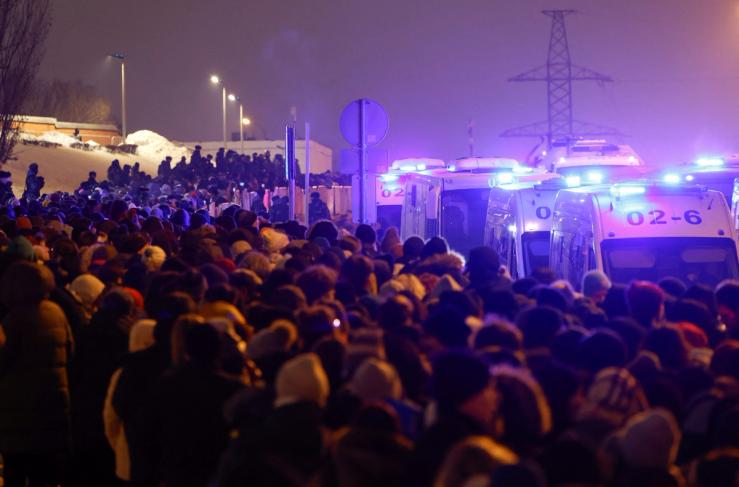The News
At least five people have been detained in Moscow after attending the funeral of Alexei Navalny, the Russian watchdog OVD-Info reported, suggesting the Kremlin is continuing its crackdown on the opposition leader’s supporters.
One woman who attended the rally and was caught on video chanting “glory to the heroes,” a pro-Ukraine slogan, was arrested on Monday, a lawyer representing the woman told OVD-Info. She was handed a small fine, but allowed to return home the following day.
Police apprehended two other attendees of the funeral Tuesday, although the charges remain unknown, the Russian independent news outlet Agenstvo reported.
OVD-Info press secretary Dmitry Anisimov told Agenstvo that Russian security forces have likely used Moscow’s extensive surveillance system and facial recognition technology to identify attendees. In the days leading up to Navalny’s funeral, authorities installed several new surveillance cameras around the church and cemetery where the ceremony took place.
While it is “too early to talk about trends,” Anisimov said, several independent Russian human right groups warned that there was a risk of protesters being rounded up after attending the rally.
More than 400 people have been detained across Russia for protesting since Navalny died, according to OVD-Info’s estimates.
SIGNALS
Facial recognition technology is a powerful tool in the Kremlin’s arsenal
The arrests are the latest evidence of the Kremlin’s growing dependence on surveillance technology to uphold its harsh levels of repression. Facial recognition and surveillance cameras have played a role in the arrests of hundreds of protesters since Russia invaded Ukraine, a Reuters investigation found. While the hundreds of thousands of surveillance cameras in Moscow were originally touted as a way to catch criminals and improve public safety, they have now been turned against protesters. As the Kremlin seeks to centralize its surveillance system, activists warn that Russia will only get better at cracking down on dissent. “If they digitalize all the databases and combine them to make this joint database, they can find everybody,” one Russian activist told Wired.
Despite repression, hundreds continue to visit Navalny’s grave
Images and footage from Navalny’s funeral show that hundreds of Russians have continued to visit his grave in the days after the funeral, CNN reported. An article in Sobesednik, one of the few liberal publications still in print in Russia, described “gigantic queues” over the weekend, as the bouquets left on Navalny’s grave became a “mountain of flowers.” An earlier edition of Sobesednik was withdrawn from Moscow newspaper stands after it was printed with an article entitled “Russia is a happy country. Sometimes Navalnys are born in it,” the Russian independent outlet Sirena reported.



